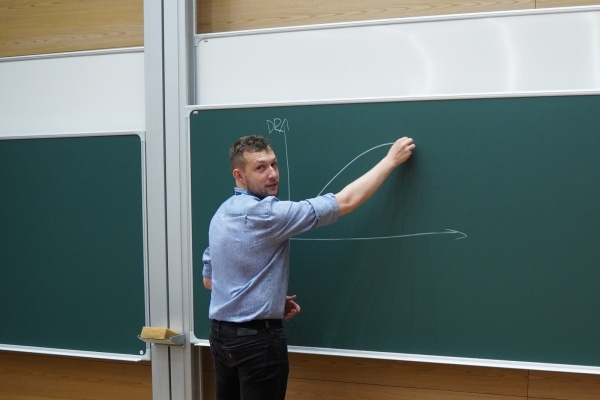OPTO2019
Piotr Węgrzyn attended the annual polish OSA-SPIE-EPS student chapters meeting - OPTO2019:Toruń conference hosted by Faculty of Physics, Astronomy, and Informatics at Nicolaus Copernicus University in Toruń. OPTO 2019 is an international conference organized by students for students. The topics of the meeting include optics, photonics, and related fields. At the conference Piotr delivered an oral presentation “Spatial Coherence. To destroy or not to destroy that is the questions”. He also chaired the “Spin-wave” conference session.
Abstract
Since the original invention of the OCT, it has been greatly improved in imaging speed and axial resolution. But the other natural way to improve the OCT technique would be to make the signal acquisition parallel. Instead of using the scanning system, we could use two dimensional detector -creating full field OCT (FF-OCT). However, the challenge is that once we go to the full field image acquisition, another problem of the coherence cross-talk generated noise arises. This noise reduces the image quality and limits wide adaptation of FF-OCT for practical and clinical applications. To face this challenge, we demonstrate and implement the spatiotemporal optical coherence (STOC)manipulation. In STOC, the phase of light in the interferometer arms is modulated in time with customized phase masks displayed sequentially on the spatial light modulator. This modulation is synchronized with light acquisition to effectively control the spatial coherence of the detected light. Reduction of the coherence area suppresses the effect of coherence cross-talk noise and enhances OCT imaging quality. In this talk I will focus on presenting core idea behind the STOC manipulation. I will discuss different experimental configurations and present data highlighting advantages and disadvantages of each ap-proach.
Dates
23 -25 Jul. 2019
Location
Toruń, Poland
Participant
Piotr Węgrzyn
Organizer
SPIE Chapter Torun
More information about the event.



